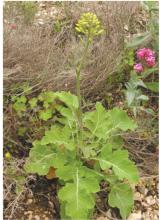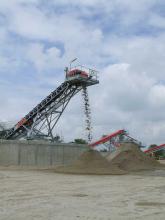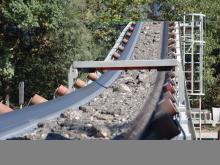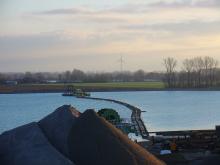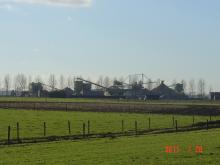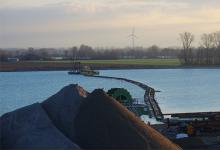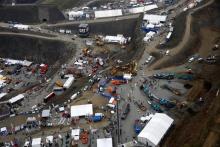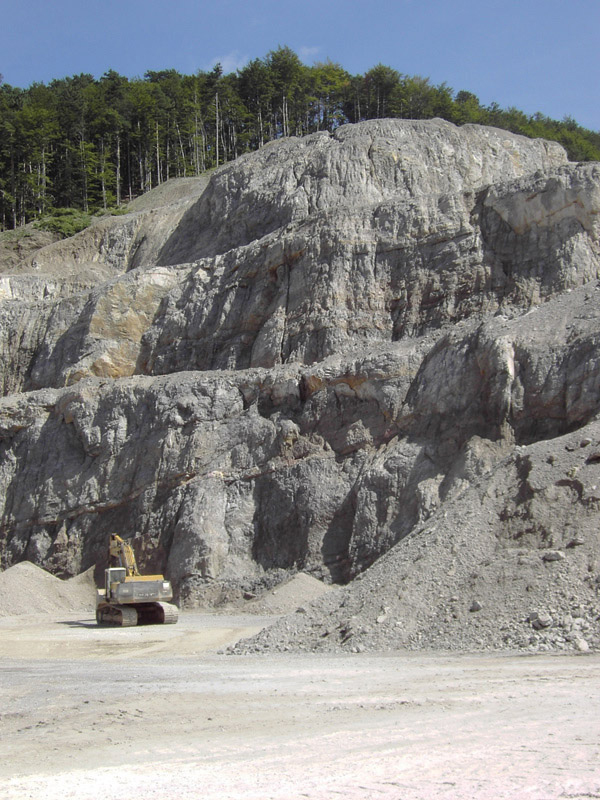
The Austrian aggregates industry is in motion - a slight, but constant growth is now being seen after a period of decline. Luise Weithaler reports
Aggregate extraction is an essential industry in Austria - this industry and the companies using its products provide thousands of jobs, often in areas where jobs are not easy to find. The 950 sand and gravel pits, as well as 250 quarries, employ some 15,500 people and a further 250,000 people in the downstream construction industry directly depend on the extraction of mineral raw materials for employment. In this way the aggregates and construction industry contribute an essential part to the Austrian GNP, which equates to nearly 10% of the complete economic effort.
The demand for aggregates in Austria can entirely be satisfied from domestic deposits with reserves of sand, rock, gravel, clay and industrial minerals spread throughout the country. With more than 100million tonnes of sand, gravel and rocks extracted every year, it means that every Austrian needs an average of 12tonnes of mineral raw materials annually.
Almost 60% of the total aggregates production is needed for maintaining and building roads and for civil engineering, and around 30% is processed into building material like cement, tiles, mortar or concrete.
The stone and ceramic industry reached a slight turnover growth of just under 4% in 2007 valuing the sector at €3.5billion. Nonetheless, the course of the year was unusual - the first six months showed an increase of 10.66%, whereas a sales loss of up to 6% was recorded in the fourth quarter.
Despite the good business in the first quarter of 2008, Dr Carl Hennrich, manager at the Association for Building Materials and Ceramic Industries, was not too optimistic and predicted a turnover growth of 2 to 3% for 2008. The basic mood within the association is mainly positive though compared to the concerns regarding the climate and energy package of the EC commission.
"The stone and ceramic industry is the main concern for the Austrian emission trading in regard to the number of facilities," explained Hennrich. "Our members will have a shortfall of almost 4.1 million certificates until 2013. That leads to additional costs of approximately €153million. Additional energy price increases will also add up - oil, gas, electricity and charcoal already amount to 9% of the total costs."
Organisation
Aggregates in Austria are quarried and refined by 220 industrial companies and 700 manufacturing firms, which are organised within the Austrian Federal Economic Chamber in the field Industry/Building Materials and Ceramic Industries (Austrian Association for Building Materials and Ceramic Industries) as well as manufacturers and handicraft. In 2004, the Forum for mineral raw material was founded and has 130 members from the industrial and manufacturing field. The chairman of the board is councillor of commerce Gerold Neuper from Dolomite Eberstein Neuper GmbH and is managed by the Association for Building Materials and Ceramic Industries' Hennrich.
"I think it is a wonderful task to get companies together," said Neuper. "There are quite a few problems, which can be only mutually solved. Such problems include the technological aspects, environmental engineering and legal regulations affecting the industry. We know that Brussels has a great influence in regard to the legal regulations. In that respect, it is important to act in such a way that they are acceptable for us and that works only in a large community. The forum for raw material managed to get companies from different areas of the industry to come together and join forces to represent our requests within Austria as well as within Europe." The forum calls itself an internally and externally open communication platform and has some quite ambitious targets. The first is an exchange of experiences and best practice - within all subjects regarding raw material economy, such as technique, distribution, recycling and environmental protection. The platform also supports dialogue between all partners of the raw material economy legislation and execution of the federation, states and communities. The organisation also creates communication platforms for the dialogue between selected target groups such as conservationists, local communities, neighbours and stakeholders.
In 2006, the forum ordered a study to be conducted on the subject 'The economical meaning of mineral raw material' in order to facilitate the industries' position within the Austrian economy. This study clearly shows that the extraction of raw aggregates is a basic production factor for the Austrian economy and stresses, through the calculation of a moot shortage scenario, the large vulnerability by a shortage of raw materials.
Raw material plan
The creation of an Austrian raw material plan was initiated in 2001, after a decision by the National Council. The purpose of that plan is to identify the raw material reserves and to secure them so that they may be accessed in future without any conflicts once any nature conservation and environmental protection issues have been resolved. The plan is an important instrument to secure the extraction of mineral raw material in agreement with local communities.
The first stage, which has been concluded, gathered data and facts and possible raw material areas were identified. Stage two started in 2006 and handles the consideration of interests and possible conflict solutions with the help of evaluation methods. The conclusion of the raw material plan has been announced for the end of 2008.
Conservation
Extraction of mineral raw materials always means an intrusion into nature and this is why the Austrian extractive industry has aimed for years at causing as little impact as possible. It implements environmental projects creating habitats for endangered animal and plant species in co-operation with international organisations.
In addition to numerous individual projects, the forum has implemented six conservation projects for animal species on the 'red list'since 1999 in co-operation with WWF Austria. Birds such as curlews, bee-eaters and eagle owls, as well as green and natterjack toads and endangered dragonflies have found new habitats in disused sites.
In 2006 the ground-breaking co-operation of the extractive industry and World Wide Fund for Nature -WWF Austria received the European Industrial Minerals Association's Recognition Award for their excellent collaboration. In the years to come the focus will be put on the 'industry's ecological foot print'.
New ideas for old stone
The Dolomite Group Eberstein is a family company which is managed by councillor of commerce Gerold Neuper. It has 50 employees working at the four locations in Carinthia, and extracts and processes around 1million tonnes of aggregates each year.
The Dolomite stone quarry in Eberstein is the oldest branch of the company - the site has been worked for over 100 years and has been owned by the Riedl and Neuper families since 1939. The rock extracted at the site is used in road construction, concrete, plaster, agriculture and forestry, as well as the food and fire industry. This high-quality natural stone can be used in 120 different areas.
The company also has a limestone quarry in Kellerberg and quarrying of this weathered limestone has been underway at the site for 150 years, although it has only been owned by the family Neuper for 20 years. In Fohnsdorf, the company extracts a mixture of coal and clay left over from coal mining in the area but which can be used as a fuel.
Gösseling is the location of the most recent addition to the company and extracts limestone. The quarry area had been disused for some years before it was reactivated four years ago by the Dolomite Group Eberstein. The material is used in the road construction, concrete, agriculture, forestry and for environmental engineering projects.
The company has a strong focus on environmental safety and more than 20% of the turnover was invested in this area, as well as implementing new practices. At Eberstein, where around 600,000tonnes of dolomite is mined per year with three to four shift operations, noise and dust emissions have been reduced to a minimum. The mining is invisible to the population - the dolomite is transported by conveyor for processing and abandoned parts of the quarry are re-natured.

